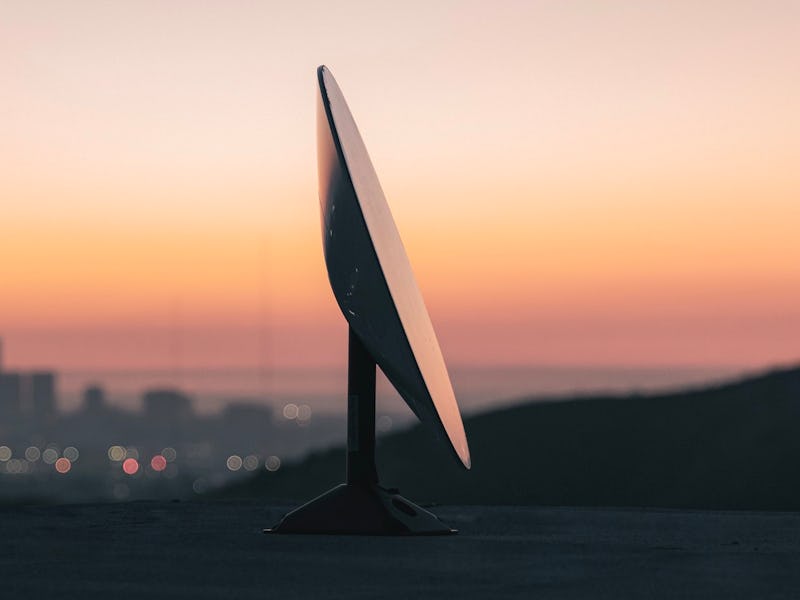SpaceX: How to see Starlink this week in New York, Seattle, and London
SpaceX's internet connectivity constellation is making its way across the skies. Here's where you may be able to see it.

Starlink, SpaceX's high-speed internet constellation, is taking shape. This week, recent launches are expected to be visible as a trail across the night sky in cities like London, New York, and Seattle.
The company's constellation has been coming together at lightning speed. This month, the firm announced that beta tests demonstrated Starlink can offer low latencies and speeds of over 100 megabits per second. The company launched the twelfth batch of Starlink satellites last week, sending up 60 craft from Florida's Launch Complex 39A.
All of this has been momentum toward offering better satellite internet than ever before, enabled by a large number of satellites operating at a lower altitude of 550 kilometers.
Fans have also been keeping up with Starlink as it moves across the sky. The website FindStarlink has been tracking batches soon after they launch, at which stage they have yet to fully separate. These newly-launched crafts can be seen flying across the sky in a trail, a feature that has caused some concern among the astronomical community.
SpaceX has taken steps to make the satellites harder to spot. This includes a darker coating referred to as "DarkSat." The results of this have been mixed: Jeremy Tregloan-Reed, an astronomer at the University of Antofagasta in Chile, told Scientific American that he would not consider DarkSat "a victory but instead a good step in the right direction."
While the crafts seem harder to spot with the naked eye, they're still too bright for advanced equipment at the Rubin Observatory.
Starlink's future visualized.
Spotting Starlink in the sky has become a fun hobby for fans of the constellation, but the FindStarlink website does express a word of caution: user reports suggest that some sightings may not be visible. The predicted sightings below are all expected to be bright, but the website warns that a multitude of factors needs to align for the craft to be visible.
SpaceX Starlink: When and how to see from New York
All times are in Eastern time.
- Tuesday, September 15, 4:56 a.m.: The satellites should be visible for two minutes. Look from north to northeast.
- Thursday, September 17, 5:40 a.m.: The satellites should be visible for six minutes. Look from northwest to southeast.
SpaceX Starlink: When and how to see from Seattle
All times are in Pacific time.
- Tuesday, September 15, 4:59 a.m.: The satellites should be visible for two minutes. Look from southeast to east.
- Tuesday, September 15, 5:41 a.m.: The satellites should be visible for six minutes. Look from northwest to east.
- Wednesday, September 16, 4:56 a.m.: The satellites should be visible for four minutes. Look from northwest to east.
- Wednesday, September 16, 5:25 a.m.: The satellites should be visible for three minutes. Look from southwest to northeast.
- Thursday, September 17, 5:52 a.m.: The satellites should be visible for four minutes. Look from west to northeast.
- Friday, September 18, 4:50 a.m.: The satellites should be visible for two minutes. Look from northeast to northwest.
- Friday, September 18, 5:04 a.m.: The satellites should be visible for three minutes. Look from west to southeast.
SpaceX Starlink: When and how to see from London
All times are in British Summertime.
- Tuesday, September 15, 4:23 a.m.: The satellites should be visible for three minutes. Look from north to east.
- Wednesday, September 16, 5:10 a.m.: The satellites should be visible for five minutes. Look from west to southeast.
- Wednesday, September 16, 5:46 a.m.: The satellites should be visible for five minutes. Look from southwest to east.
- Thursday, September 17, 4:26 a.m.: The satellites should be visible for three minutes. Look from southeast to east.
- Friday, September 18, 5:10 a.m.: The satellites should be visible for four minutes. Look from southwest to east.
- Friday, September 18, 5:18 a.m.: The satellites should be visible for four minutes. Look from southwest to southeast.
- Friday, September 18, 5:41 a.m.: The satellites should be visible for five minutes. Look from west to east.